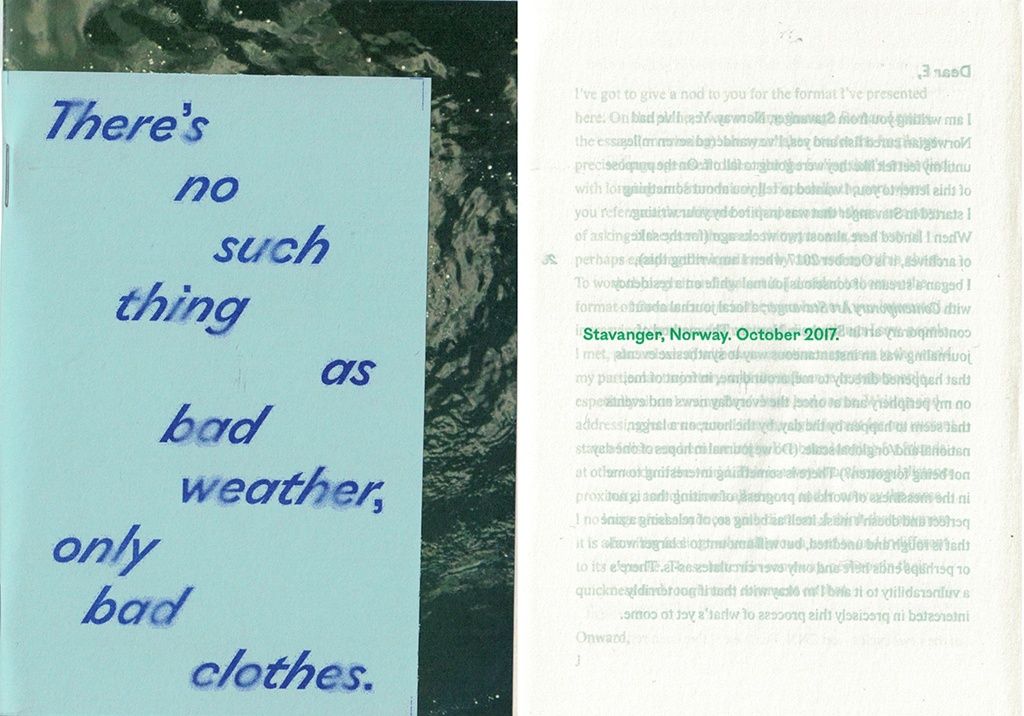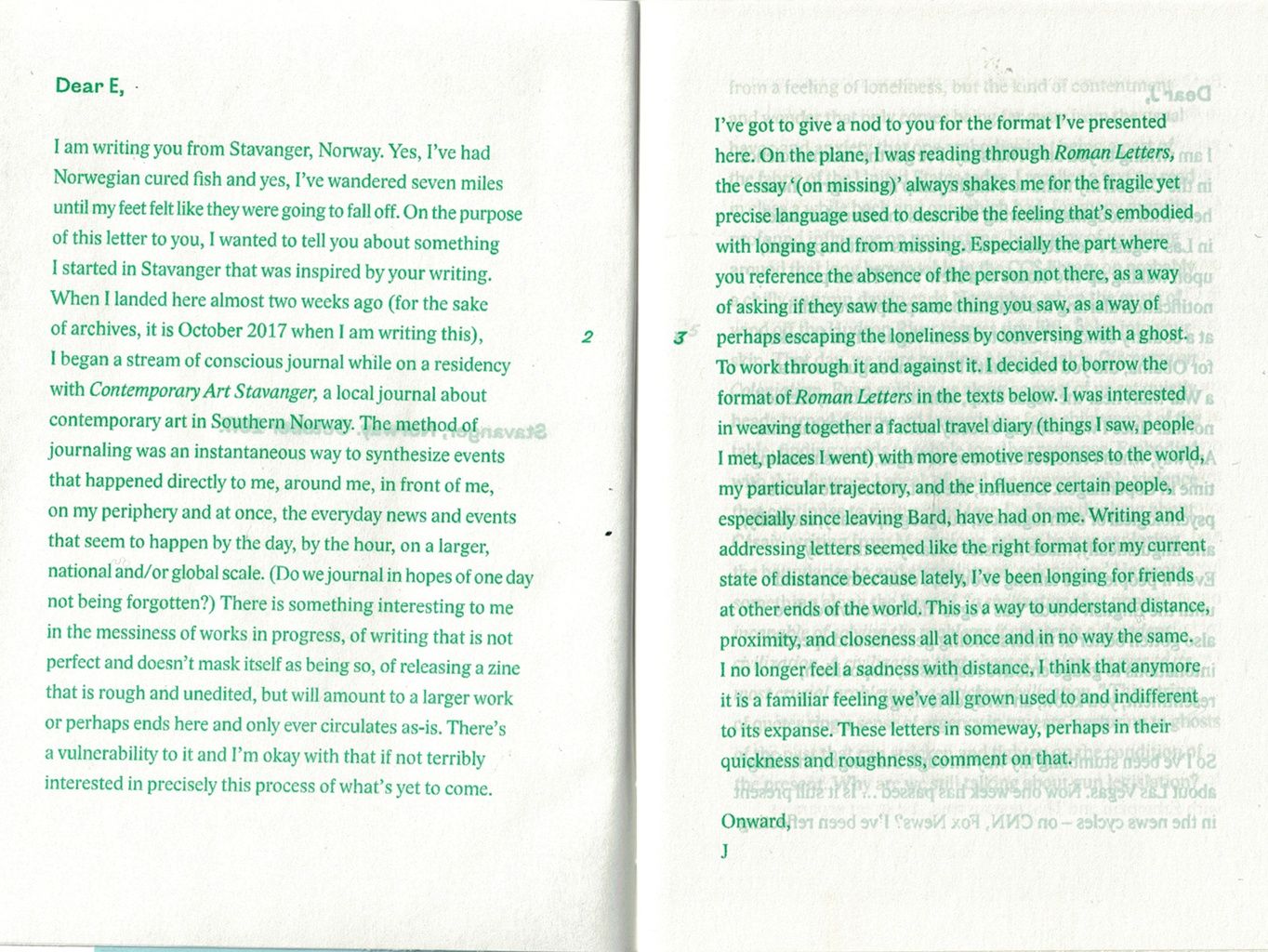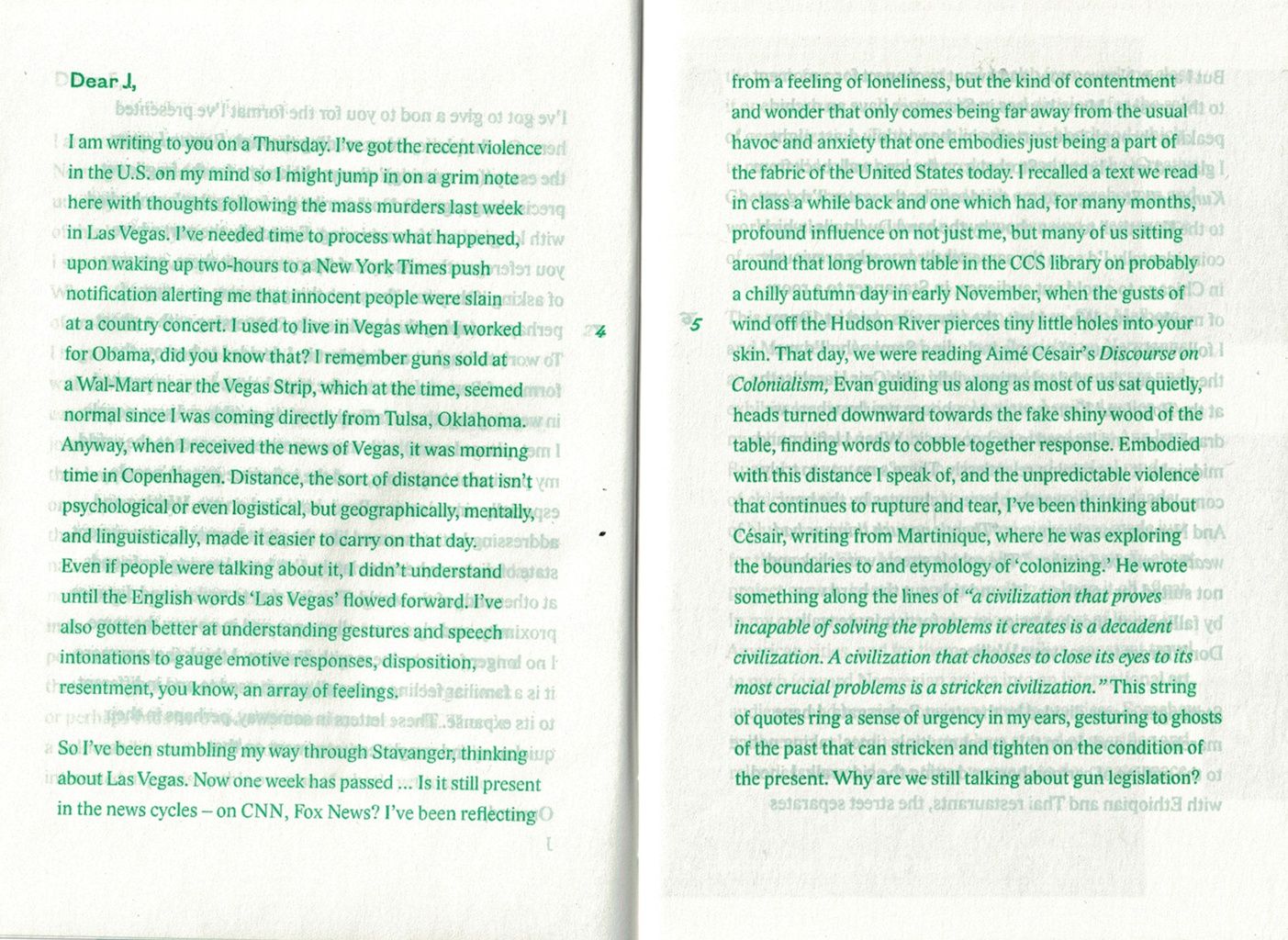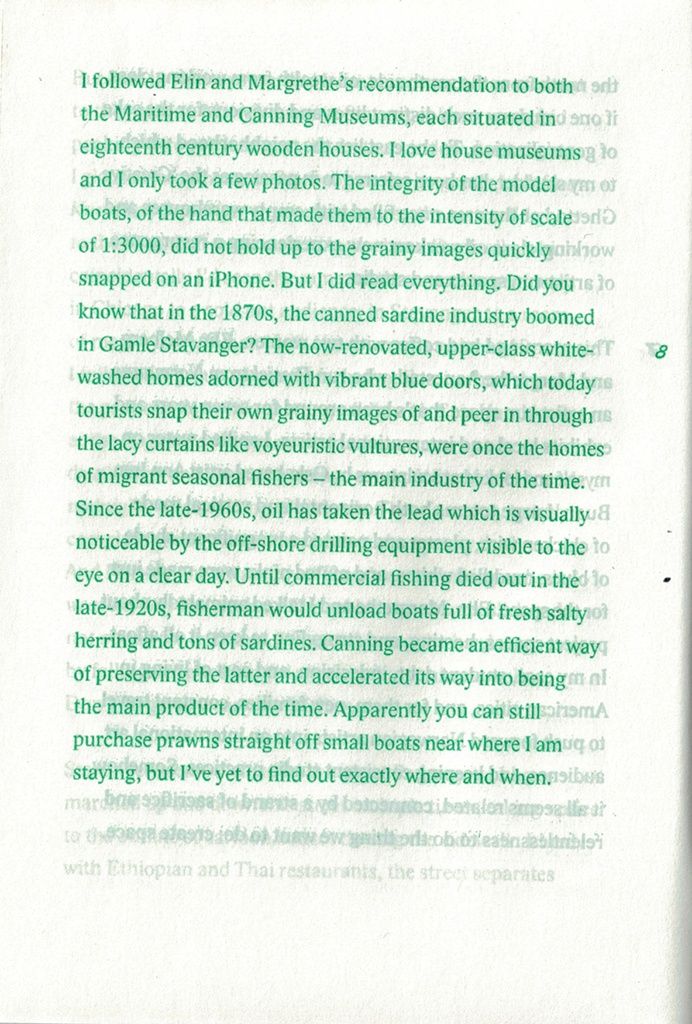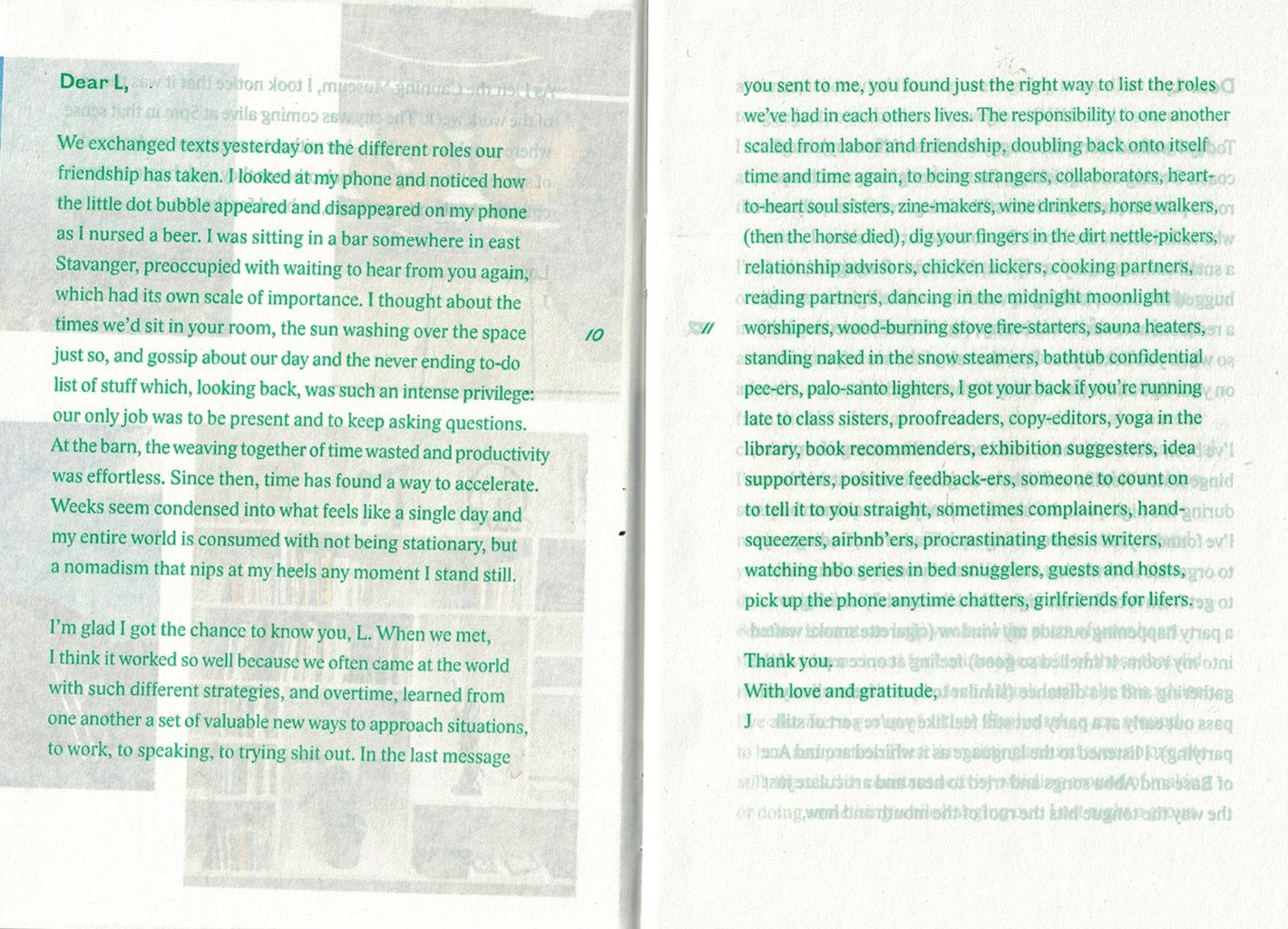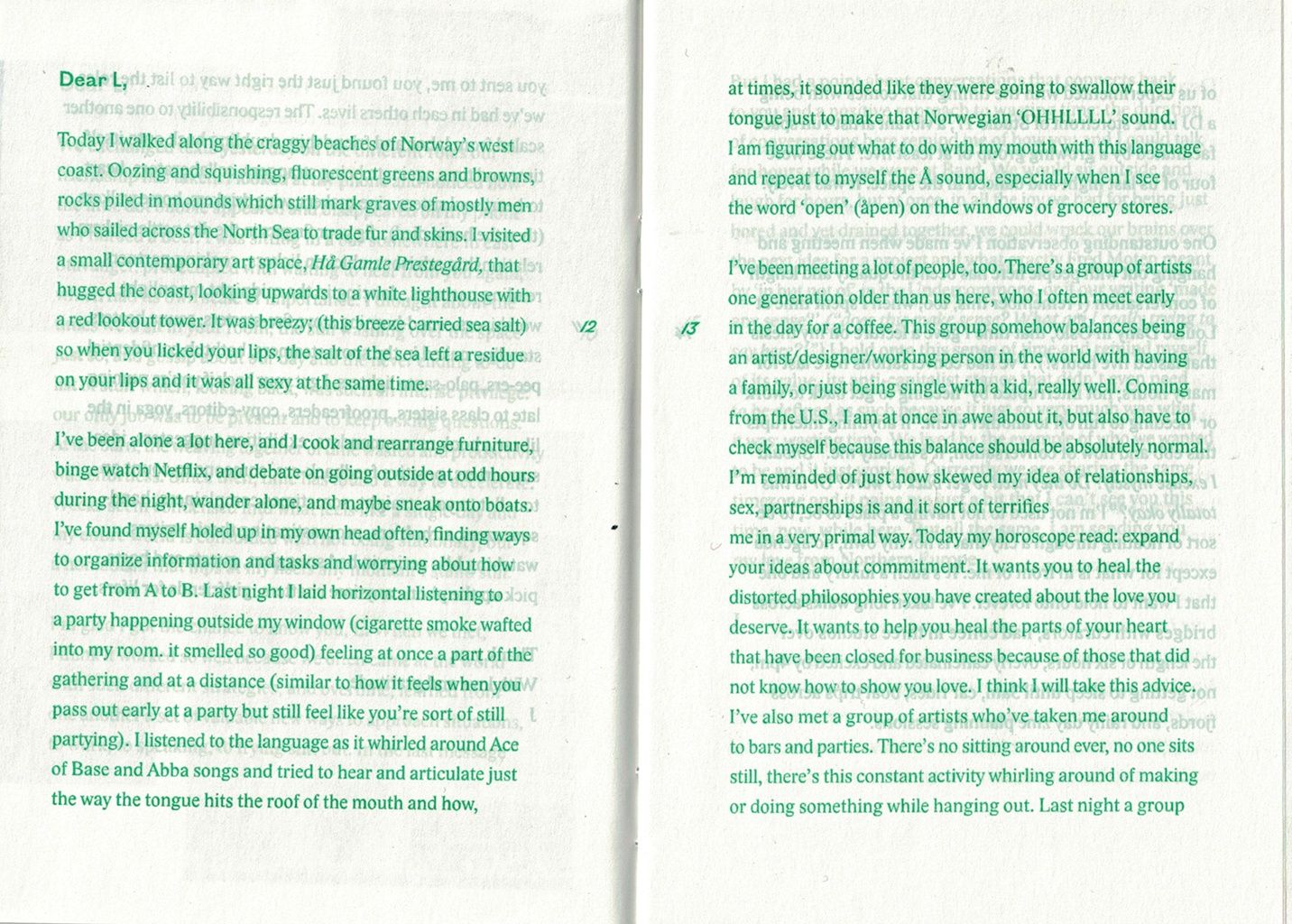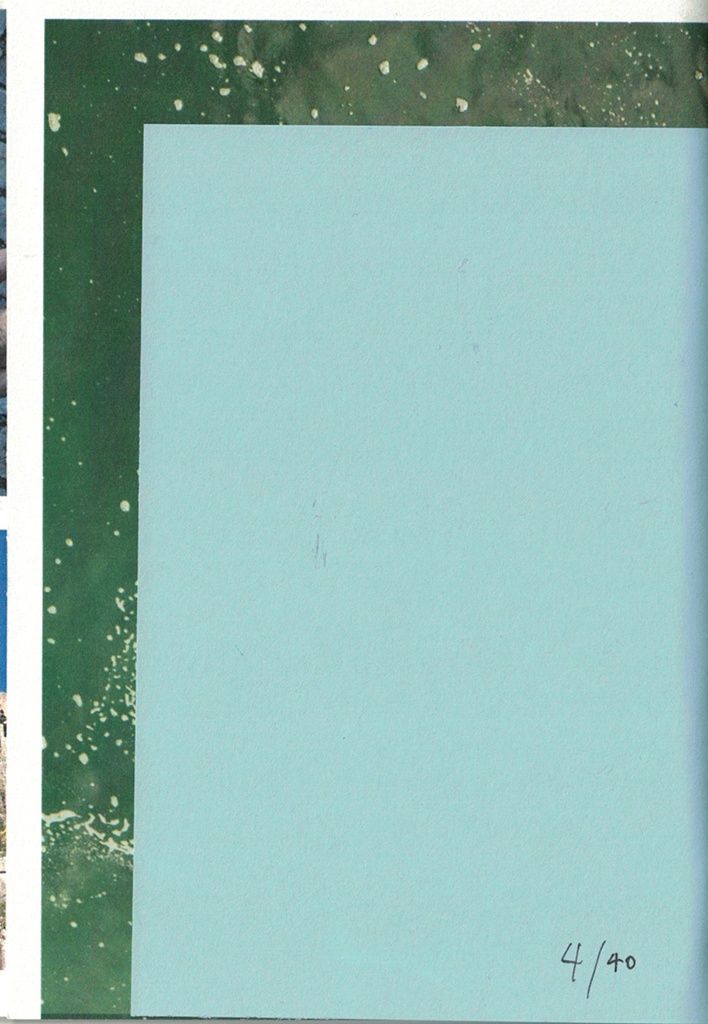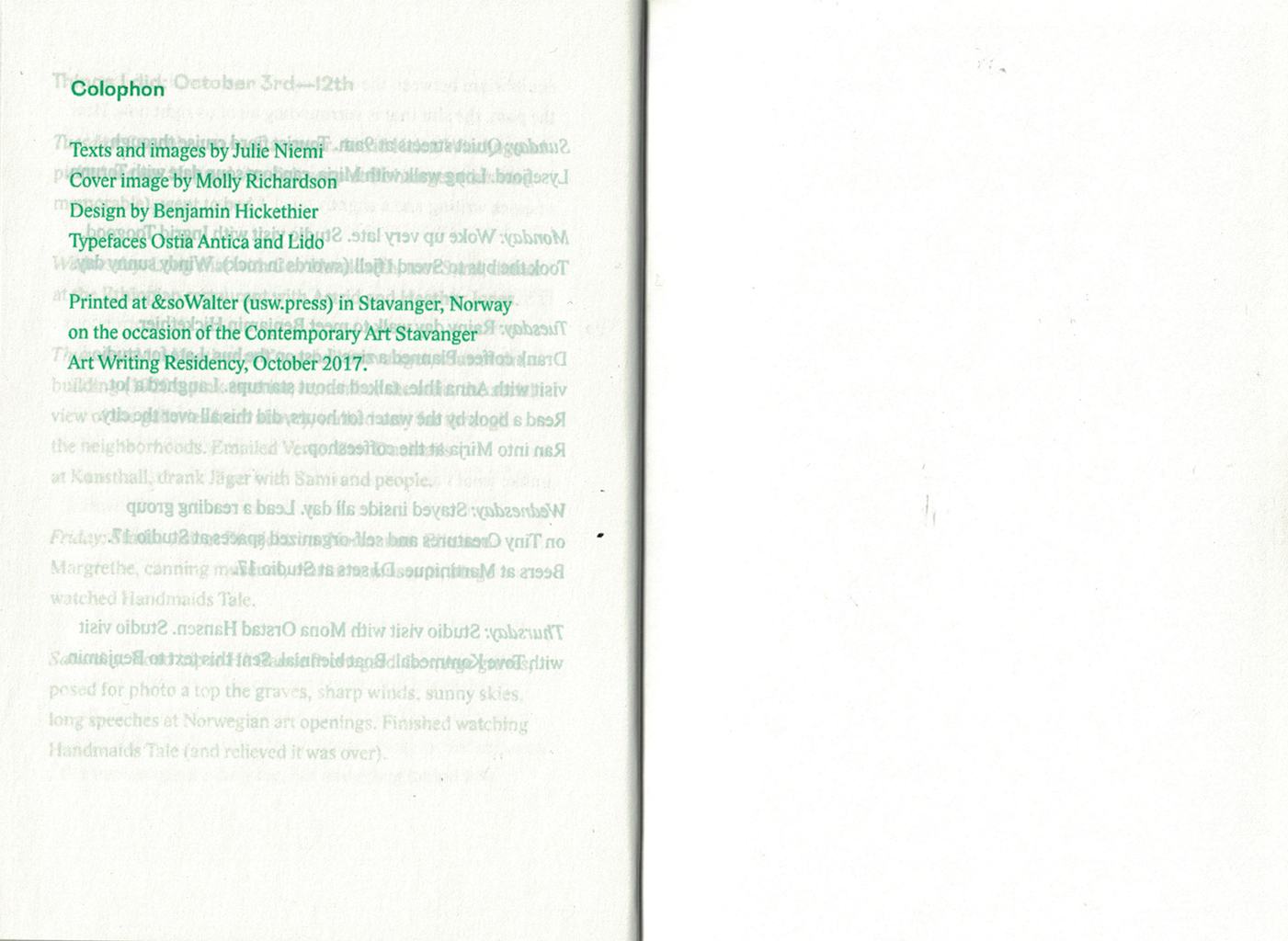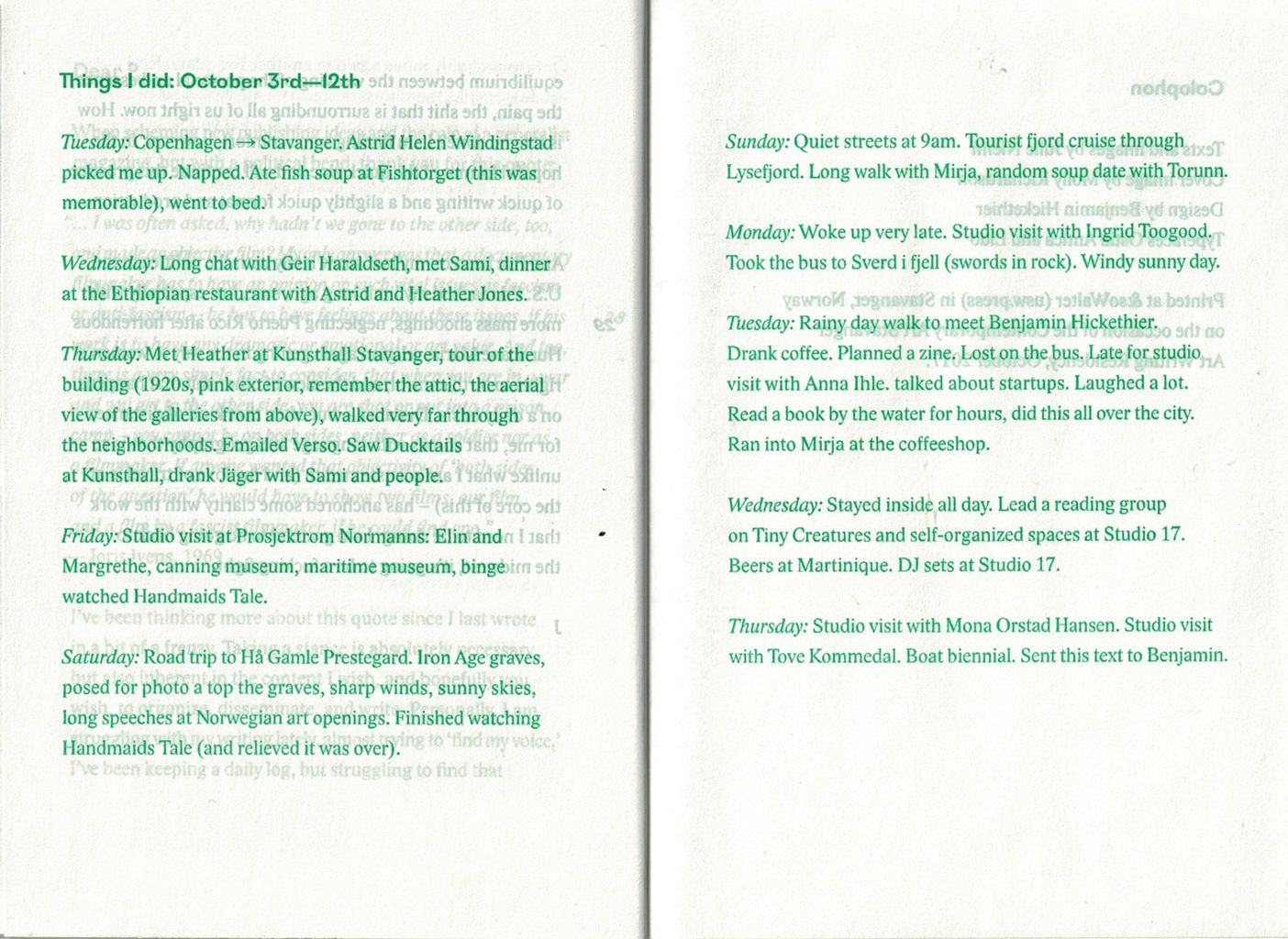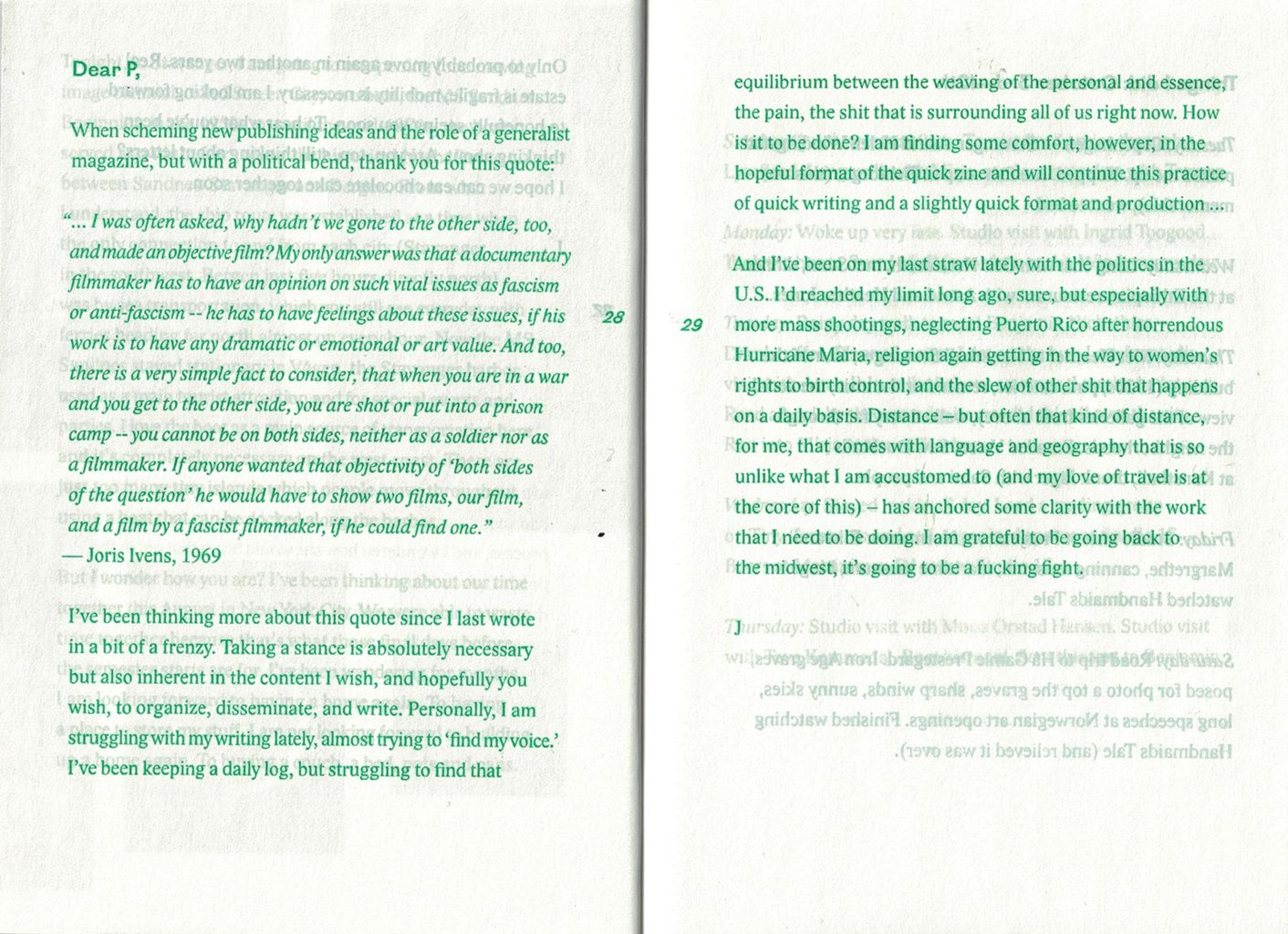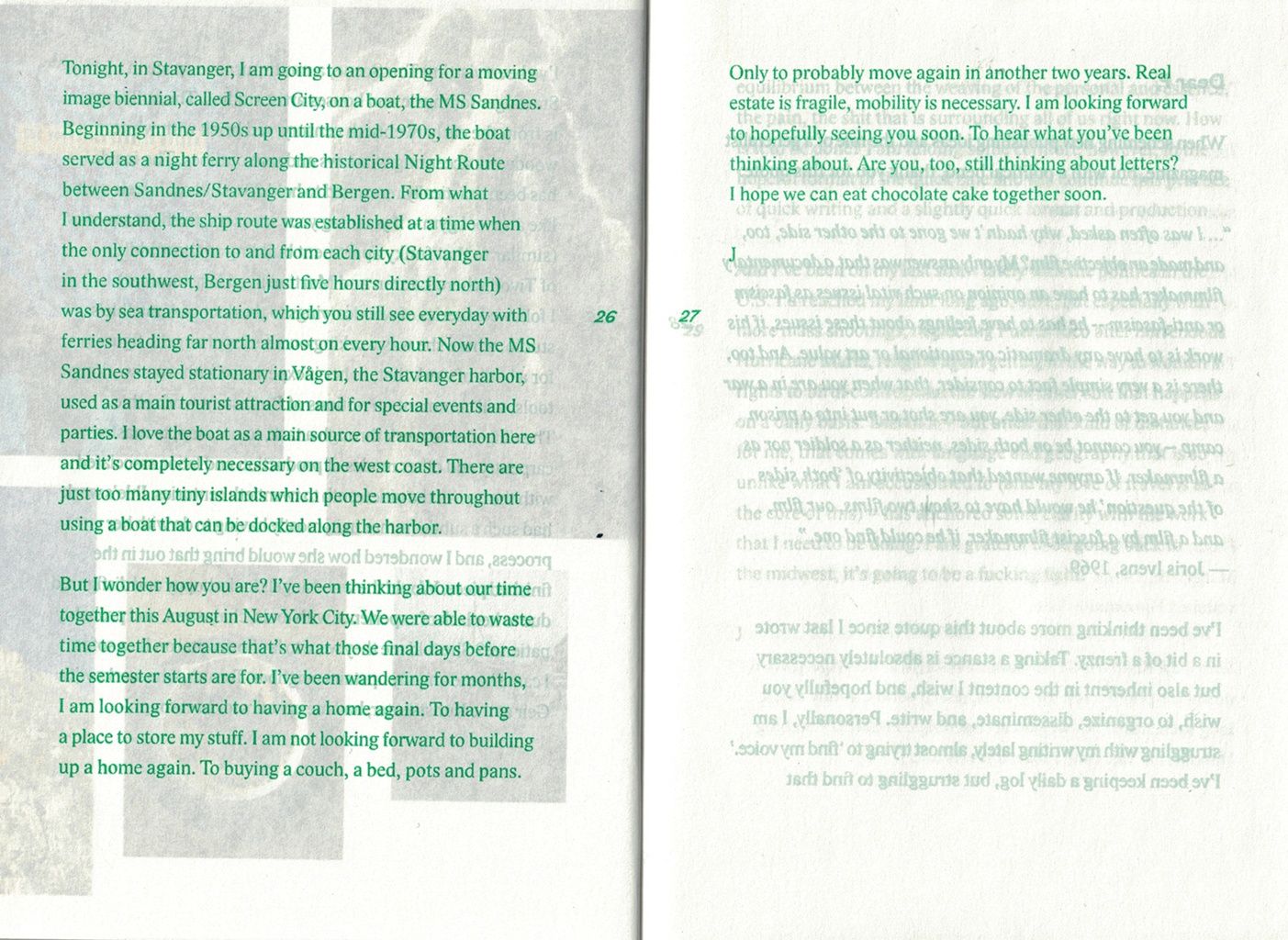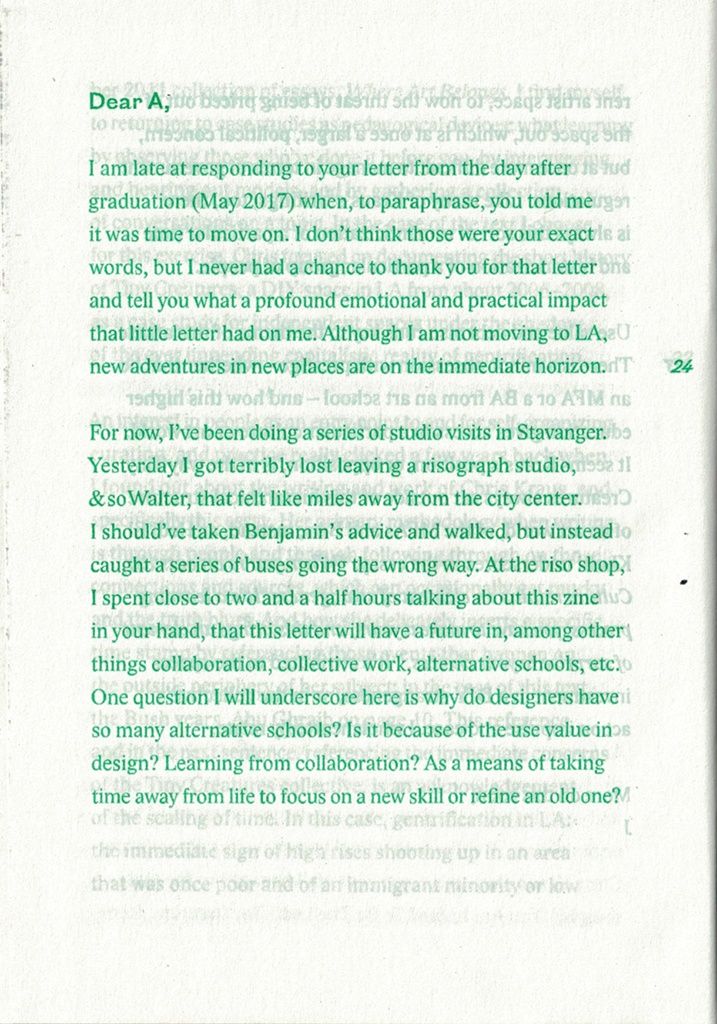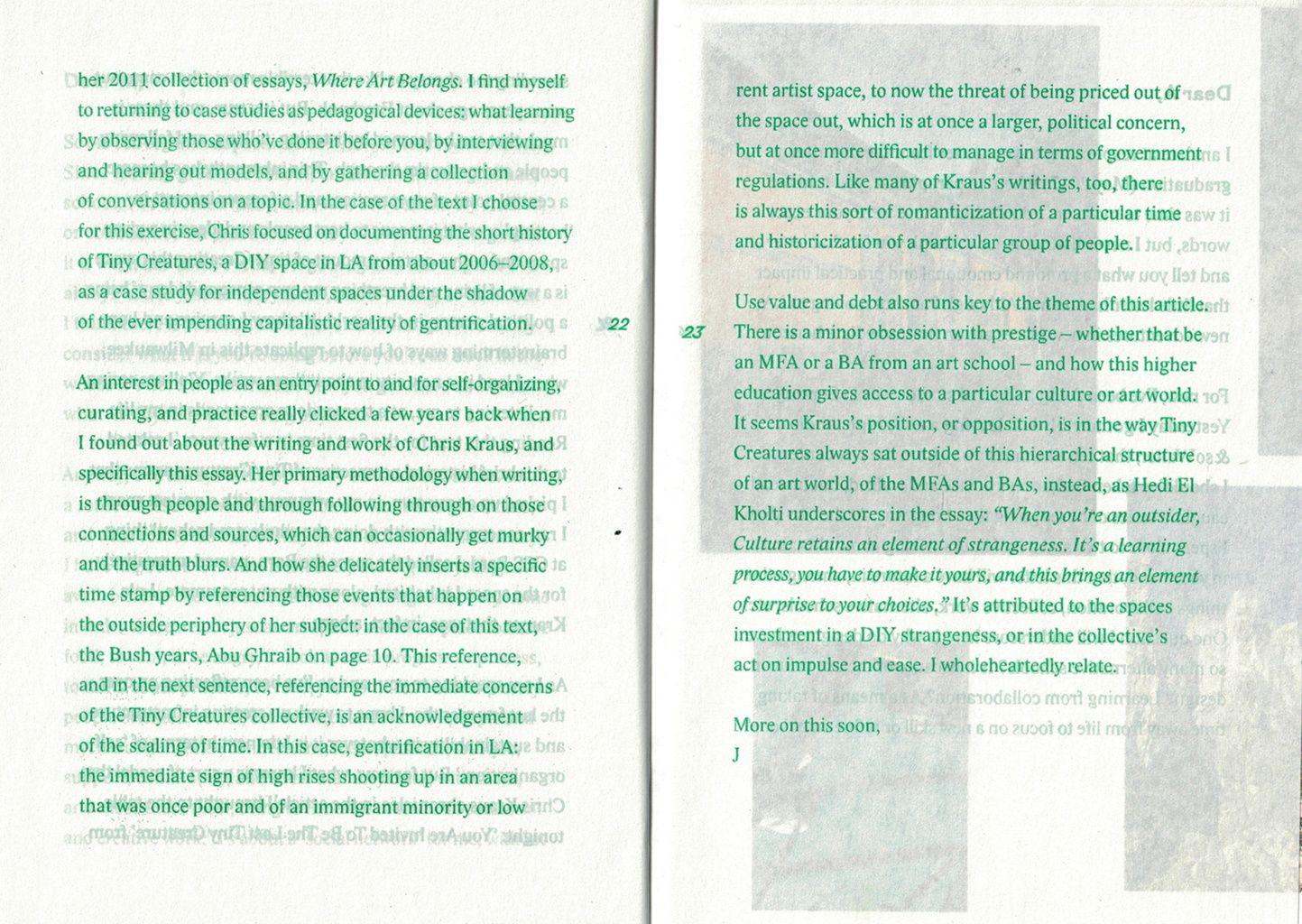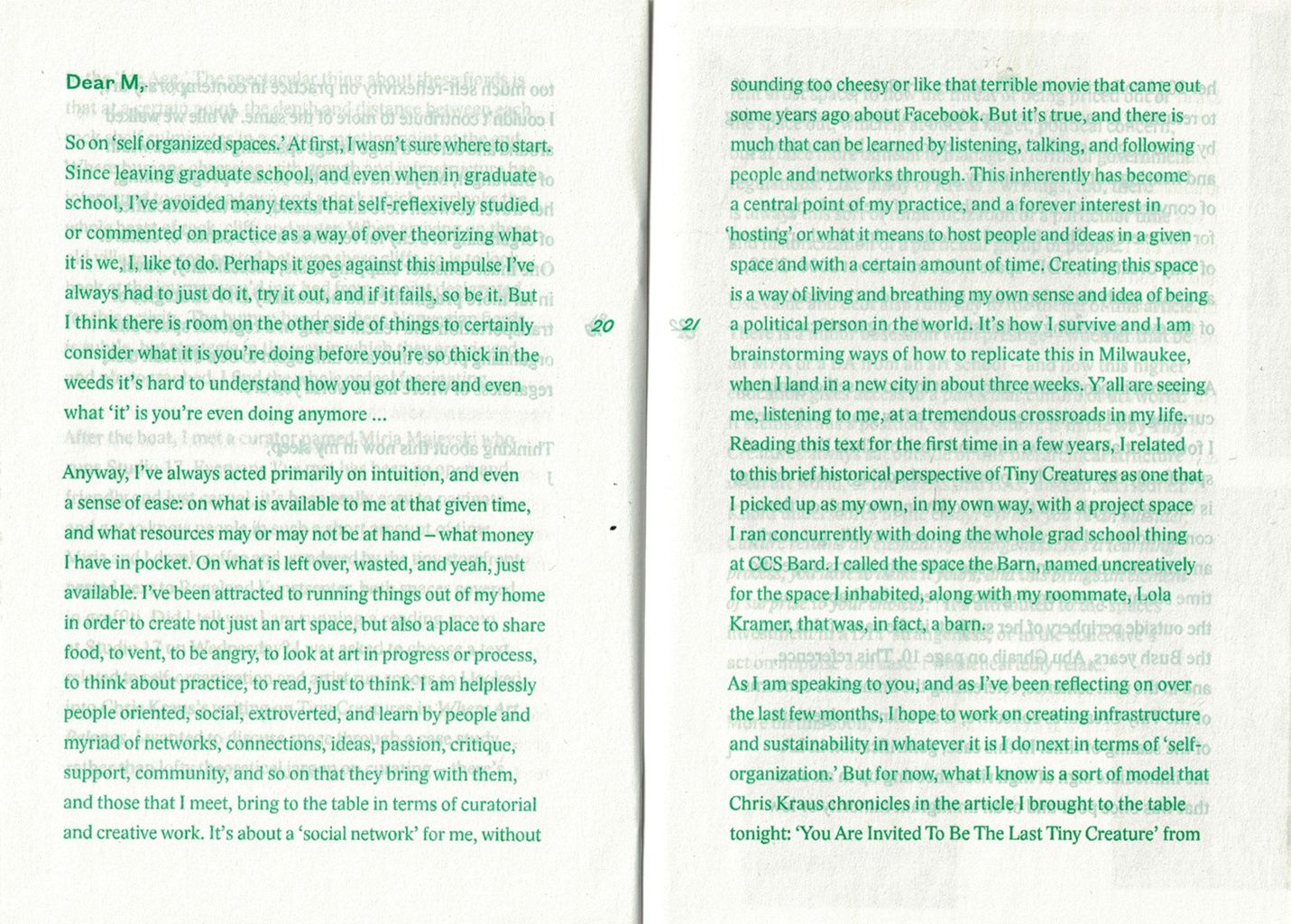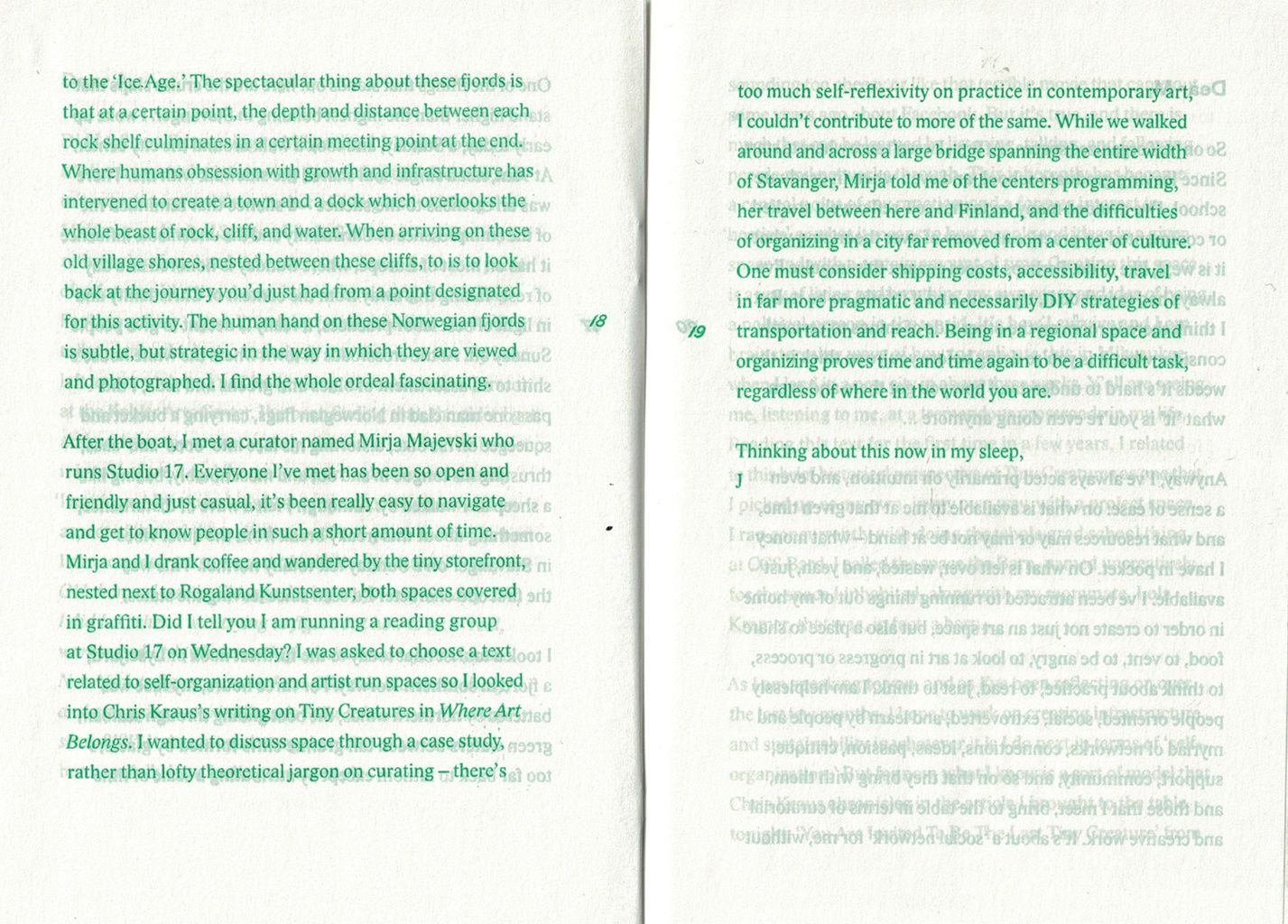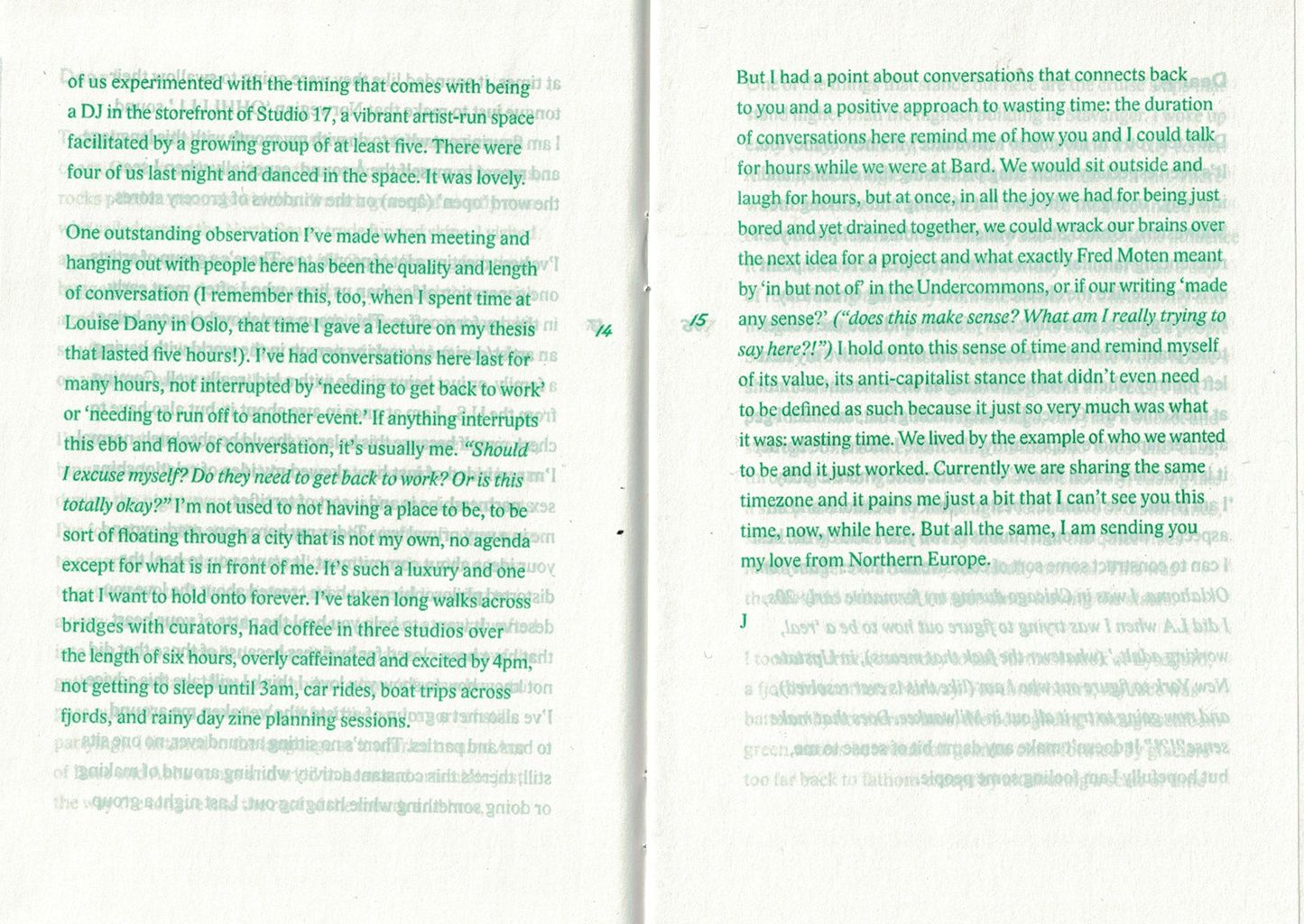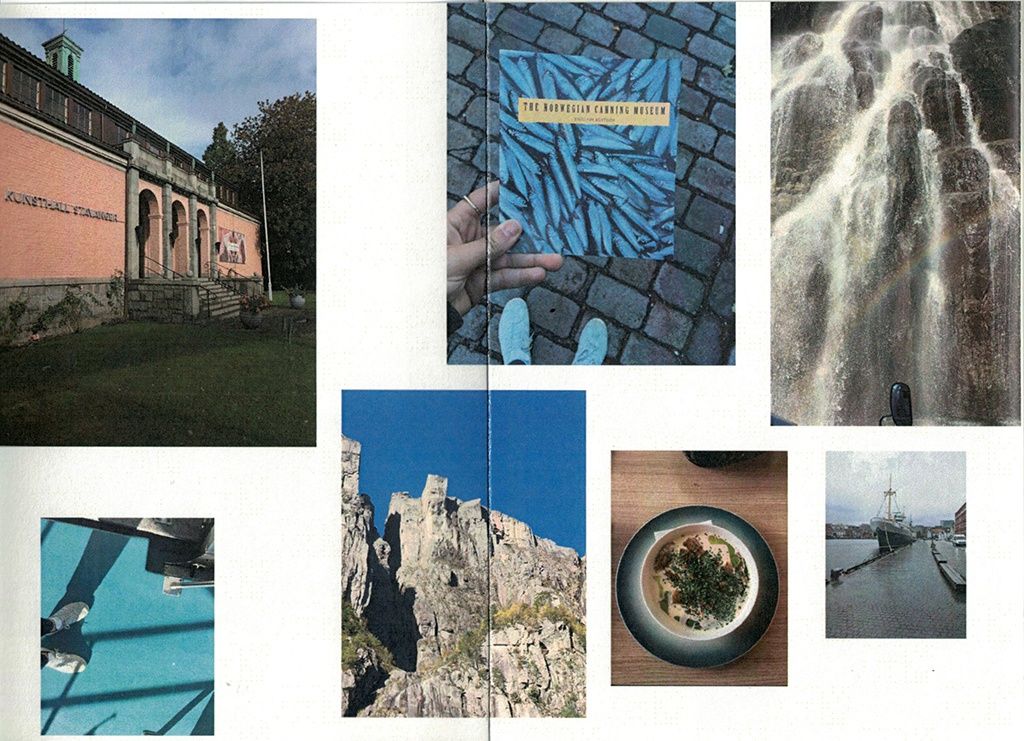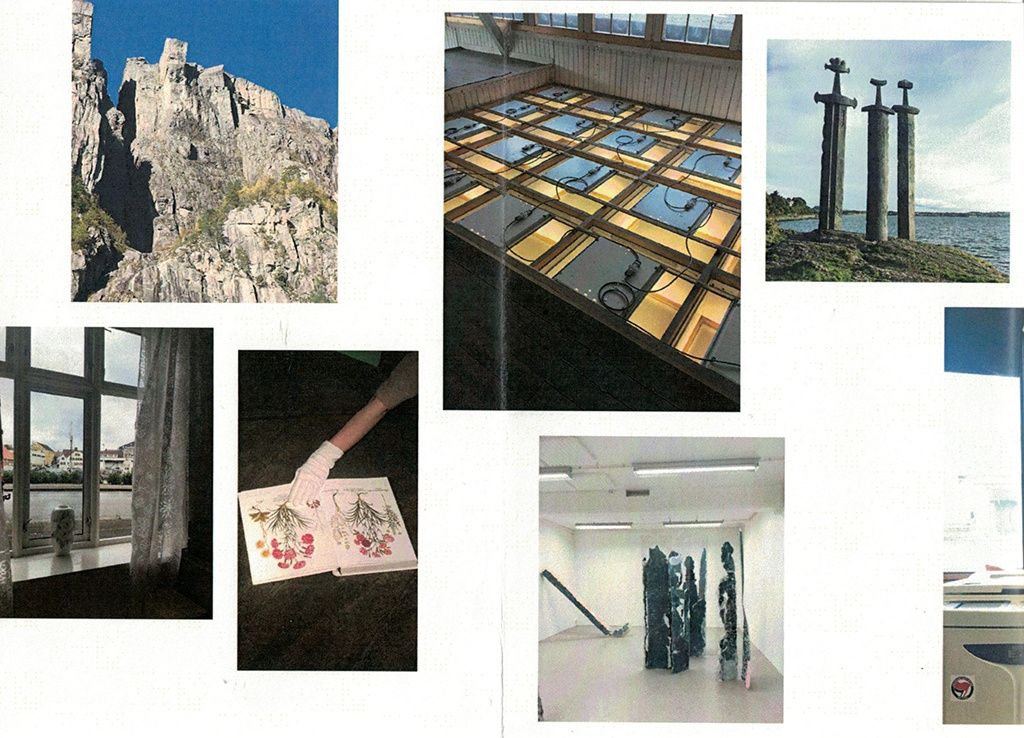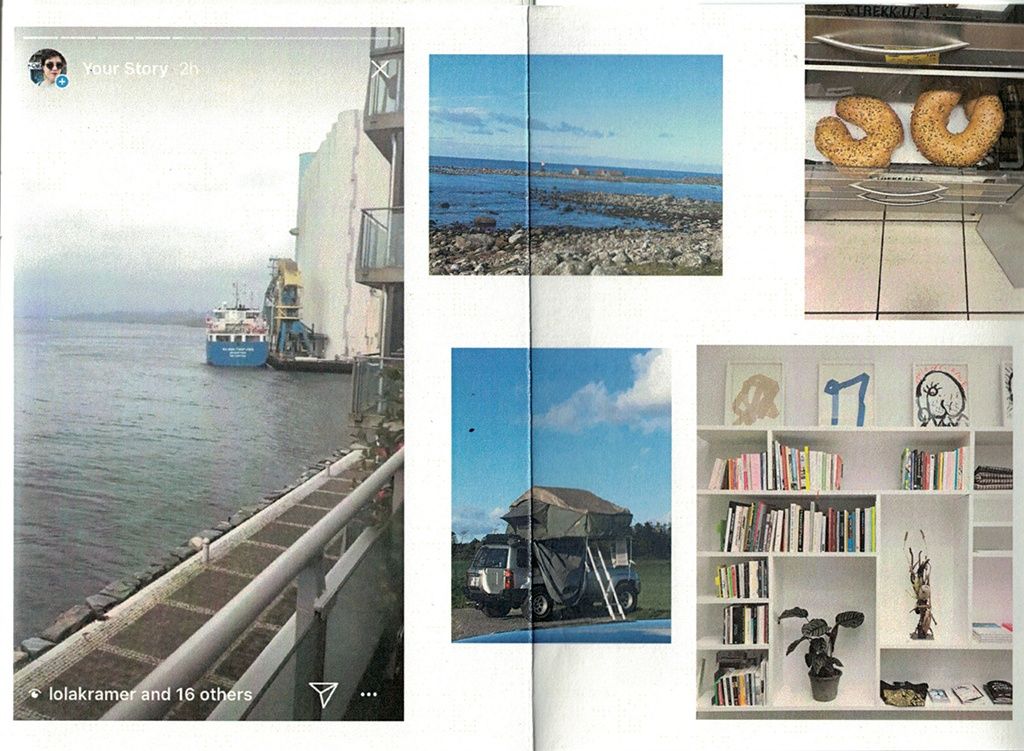Dear M,
So on ‘self organized spaces.’ At first, I wasn’t sure where to start. Since leaving graduate school, and even when in graduate school, I’ve avoided many texts that self-reflexively studied or commented on practice as a way of over theorizing what it is we, I, like to do. Perhaps it goes against this impulse I’ve always had to just do it, try it out, and if it fails, so be it. But I think there is room on the other side of things to certainly consider what it is you’re doing before you’re so thick in the weeds it’s hard to understand how you got there and even what “it” is you’re even doing anymore...
Anyway, I’ve always acted primarily on intuition, and even a sense of ease: on what is available to me at that given time, and what resources may or may not be at hand – what money I have in pocket. On what is left over, wasted, and yeah, just available. I’ve been attracted to running things out of my home in order to create not just an art space, but also a place to share food, to vent, to be angry, to look at art in progress or process, to think about practice, to read, just to think. I am helplessly people oriented, social, extroverted, and learn by people and myriad of networks, connections, ideas, passion, critique, support, community, and so on that they bring with them, and those that I meet, bring to the table in terms of curatorial and creative work. It’s about a ‘social network’ for me, without sounding too cheesy or like that terrible movie that came out some years ago about Facebook. But it’s true, and there is much that can be learned by listening, talking, and following people and networks through. This inherently has become a central point of my practice, and a forever interest in ‘hosting’ or what it means to host people and ideas in a given space and with a certain amount of time. Creating this space is a way of living and breathing my own sense and idea of being a political person in the world. It’s how I survive and I am brainstorming ways of how to replicate this in Milwaukee, when I land in a new city in about three weeks. Y’all are seeing me, listening to me, at a tremendous crossroads in my life. Reading this text for the first time in a few years, I related to this brief historical perspective of Tiny Creatures as one that I picked up as my own, in my own way, with a project space I ran concurrently with doing the whole grad school thing at CCS Bard. I called the space the Barn, named uncreatively for the space I inhabited, along with my roommate, Lola Kramer, that was, in fact, a barn.
As I am speaking to you, and as I’ve been reflecting on over the last few months, I hope to work on creating infrastructure and sustainability in whatever it is I do next in terms of “self-organization.” But for now, what I know is a sort of model that Chris Kraus chronicles in the article I brought to the table tonight: “You Are Invited To Be The Last Tiny Creature” from her 2011 collection of essays, Where Art Belongs. I find myself to returning to case studies as pedagogical devices: what learning by observing those who’ve done it before you, by interviewing and hearing out models, and by gathering a collection of conversations on a topic. In the case of the text I choose for this exercise, Chris focused on documenting the short history of Tiny Creatures, a DIY space in LA from about 2006–2008, as a case study for independent spaces under the shadow of the ever impending capitalistic reality of gentrification.
An interest in people as an entry point to and for self-organizing, curating, and practice really clicked a few years back when I found out about the writing and work of Chris Kraus, and specifically this essay. Her primary methodology when writing, is through people and through following through on those connections and sources, which can occasionally get murky and the truth blurs. And how she delicately inserts a specific time stamp by referencing those events that happen on the outside periphery of her subject: in the case of this text, the Bush years, Abu Ghraib on page 10. This reference, and in the next sentence, referencing the immediate concerns of the Tiny Creatures collective, is an acknowledgement of the scaling of time. In this case, gentrification in LA: the immediate sign of highrises shooting up in an area that was once poor and of an immigrant minority or low rent artist space, to now the threat of being priced out of the space out, which is at once a larger, political concern, but at once more difficult to manage in terms of government regulations. Like many of Kraus’s writings, too, there is always this sort of romanticization of a particular time and historicization of a particular group of people.
Use value and debt also runs key to the theme of this article. There is a minor obsession with prestige – whether that be an MFA or a BA from an art school – and how this higher education gives access to a particular culture or art world. It seems Kraus’s position, or opposition, is in the way Tiny Creatures always sat outside of this hierarchical structure of an art world, of the MFAs and BAs, instead, as Hedi El Kholti underscores in the essay: “When you’re an outsider, Culture retains an element of strangeness. It’s a learning process, you have to make it yours, and this brings an element of surprise to your choices.” It’s attributed to the spaces investment in a DIY strangeness, or in the collective’s act on impulse and ease. I wholeheartedly relate.
More on this soon,
J


